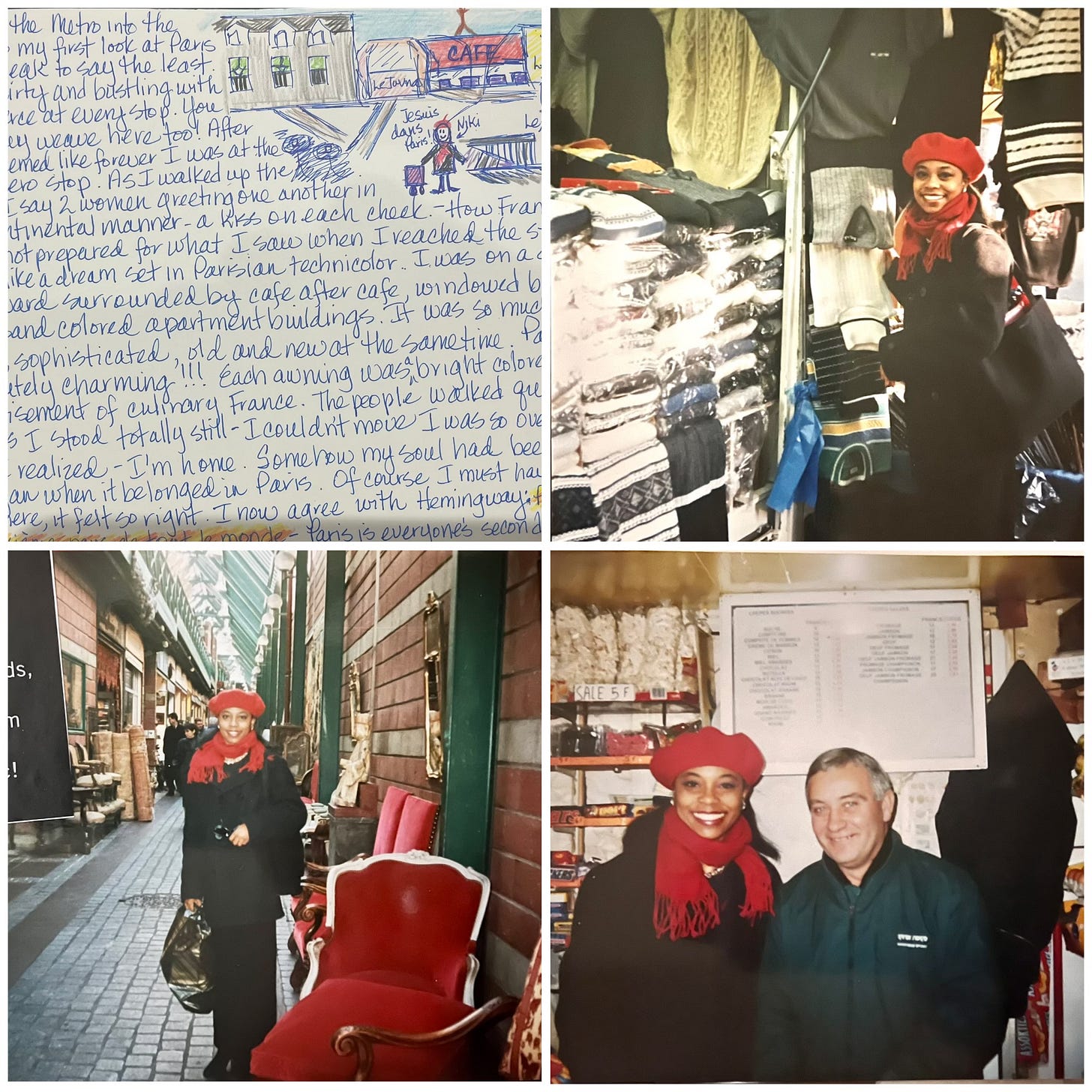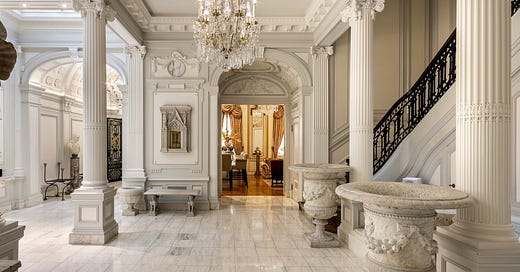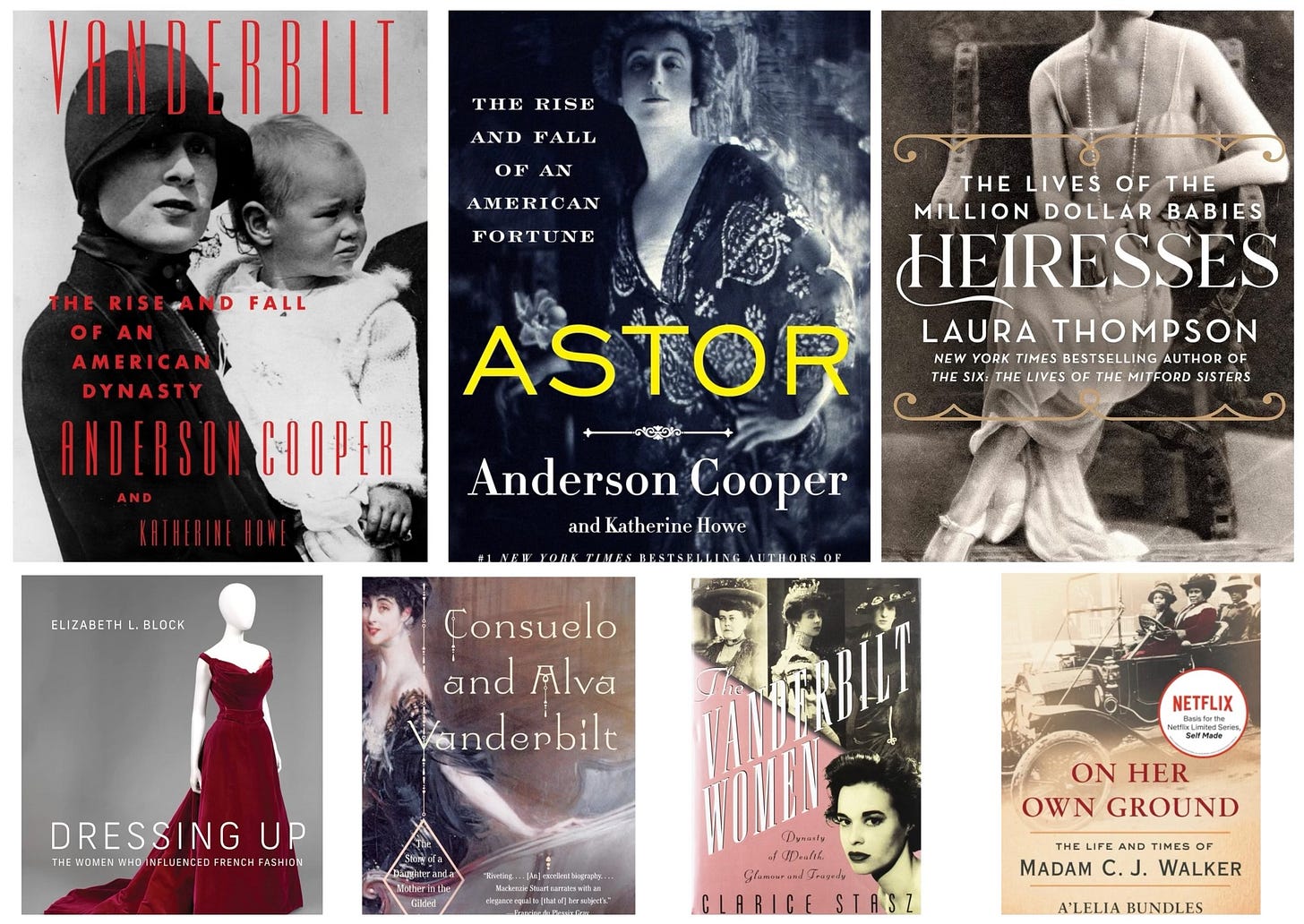Musings on...Chosen Pages from The Gilded Age
Promenading From Page to Screen is My Favorite Way to Travel
Most of my obsessions probably harken back to a book, or perhaps a movie that I saw as a child, based on a book. We will get to Breakfast at Tiffany at some point during our acquaintance, but my enthusiasm with The Gilded Age (the TV series and time period) begins with a novella written in 1944, about a girl living in Paris, adapted as a movie when I was just a little girl sitting on a couch.
I remember vividly seeing the movie, Gigi for the first time. It was a Saturday, and it was that period after cartoons that I loved, but before the westerns that I hated. In between, an old comedy or musical would run. I must have been 5 or 6, because I know my brother was born (we are 5 years apart). I know that my feet did not dangle over the edge of the couch, which I found so distressing. Gigi was a beautiful technicolor marvel set in a vibrant Paris during the Belle Epoque. I was entranced by the colors, the lilting accent of Leslie Caron and her hilarious aunts. I didn’t fully understand the plot (seeing it again as an adult, that was a good thing), but I knew I loved the music, the interiors and the beautiful costumes. I declared then within my 6-year-old self that I would go to this magical place everyone called gay Par-ee.

Once old enough, I read the novella by Collette that Gigi was based on. That led me into the books of Edith Wharton and the social commentaries of Mark Twain. I recognized that the clothing, décor and social attitudes were very similar. A little detective work revealed they hailed from the same time period. The Belle Epoque and the American Gilded Age (coined by Twain) were one in the same. Both sit firmly between two wars, when industrial expansion fueled new economic and social status. It has become my favorite point in history to explore, so yes, my nerdeth cup runneth over.
The era on both sides of the Atlantic is distinguished for the burst of optimism as both countries climbed out of the misery of war. It was the time when the old guard was upended by new voices and pioneers in technology and industry. I love a great class struggle as the upstarts topple the established Goliaths. I loved the influx of new ideas in literature through commentaries from Twain and the art of his contemporaries like Singer Sargent and Helleu, painting life along the boulevards, cafes and operas. I loved, loved, loved, the lifestyle politics that Edith Wharton and Henry James wrote about. Wharton can be considered the first lifestyle writer, a literary Martha Stewart, bringing the inner workings of domestic life into the public domain. Born into the world where money is never discussed, but still speaks.
That led me to Downton Abbey and how the English landed gentry used the dowery of rich American daughters to shore up their decaying castles. Then, when I heard that Julian Fellowes was bringing his elegantly pithy writing to the Americas, I was armed and ready. Hello, The Gilded Age. So, I journeyed from that couch in Michigan to Paris, to England and back to America on the pages of history by some of the world's greatest writers.
Tonight, after a long wait, I will set myself firmly on a couch again for the second season of the Gilded Age on HBO Max. The power struggle within wealthy circles as the industrialists attempt to clean their ‘new money’ with largesse and extravagant households is great drama. It might be history, but the storyline is prescient. Today Bezos and Zuckerberg are skewered for the extravagant wealth displayed in their homes and superyachts. They are the heralds of new industry just as Rockefeller, Astor and Vanderbilt sired an industrial age. As is said in Beauty and the Beast (also derived from a book) a tale as old as time?
Since I have an obsessive backstory in the gilded age, I offer you a primer for season two in the language that I speak most fluently. A few books from my library for your consideration.
You may or may not know that Anderson Cooper is a Vanderbilt. George Russell is loosely based on the newly moneyed Vanderbilt, in that Vanderbilt began in shipping, then moved to railroads. Cooper is the great, great, great, grandson. His first book was about his family and his recent release is a history of the Astor family, which is the family directly named in the series. Mrs. Russell wants Mrs. Astor’s approval because the Astors are the head of the old guard, originally Dutch settlers who traded fur with the Native Americans following the American Revolution.
Heiresses by Laura Thompson
This book was on the shortlist of books I was looking forward to reading in 2022, before I knew of The Gilded Age series. I always consider women the more interesting characters. This book expands on the lives of the daughters of the new generation of wealth, married off to old money families or even English aristocracy (see Cora, Downton Abbey) their immense doweries a subtle attempt to garner acceptance in society. This is the playbook for the storyline of Mrs. Russell with her daughter Gladys.
Dressing up by Elizabeth Block
Even as a child, I remember loving the fashion of Gigi, and I am infatuated with the costume design of The Gilded Age. I don’t mind the considered coordination of matching gloves and a parasol. I wish hats festooned with feathers were still a thing. Promenading like a peacock around Washington Square is such a mood. I recommended this book if you wanted to have a better look into Mrs. Russell’s Stanford White designed closet, filled with designs imported from France.
Consuelo and Alva Vanderbilt by Amanda Mackenzie Stuart
Remember, the Russell family is a stand in for the Vanderbilts. They were the blueprint of new money purchasing status by marrying their daughter into aristocracy. The original Ms. Vanderbilt, Alva was the architect of making grand style the hallmark of the family wealth, building the stateliest homes and hosting grand parties. You can see this in Ms. Russell and her obstinance regarding her daughter’s entrance into society as well as the way she runs her household. This book is the truth behind that storyline, as well as an exceptional study of a new type of feminism that Alva and Consuelo brought to New York and British societies. Alva and Mr. Vanderbilt eventually divorced (which was all the scandal), so I hope Fellowes deviates from that bit of historical accuracy. I love George and Bertha’s love! When he bought out the charity bazaar because those catty doyennes snubbed his wife-chile... that man was manning!
The Vanderbilt Women by Clarice Stas
I think I found this at a library sale, published long enough ago to be considered vintage. The businessmen get all the press, but this is fully dedicated to the more interesting members of the Vanderbilt family, the women. Although often hidden in the men’s shadows, each woman was able to blaze significant trails in her lifetime, leveraging the family fortune the men provided. Each generation birthed thoroughly modern women able to contribute to the issues of their era such as women’s suffrage, modern art and even parlaying social status into an overwhelmingly successful fashion empire.
I’m making it my next mission to find the books analogous to Peggy Scott’s storyline. To see a black family of means a few decades from The Civil War is not normal viewing. I can’t tell you how pleased I was at this character and Fellowes was exceptionally crafty at burying the lede on Peggy’s introduction. It didn’t click initially (at least for me), that when Peggy aided Marian she was financially her equal, perhaps her superior. That blindness shows how easy one can become conditioned to the misdirection of conventional educational history, but Peggy’s story makes sense. Obviously, free Blacks would have set up their own communities and supported their own commerce. Of course, there would have been elite, upper middle class pharmacists like Peggy’s father. Of course, all large cities would have had conclaves like Tulsa’s Black Wall Street along their borders. And of course, it would take an outsider like an English writer to show American history in full, and I applaud Fellowes for consulting a historian to expand on the subject. I am devoted to the search and building this section of my library (share if you know any), but I think On Her Own Ground: The Life of Madame CJ Walker is a step in the right direction. The first self-made female millionaire in America, her estate was near Rockefeller and Gould family compounds and she is no less a titan of the Gilded Age.
With that I will withdraw to the parlor for tea in preparation for my evening appointment with the Van Rhyijns, Russells and Astors.
If you purchase a product or register for an account through a link on this site, as an Amazon Associate, I earn from qualifying purchases with no additional charge to you.





